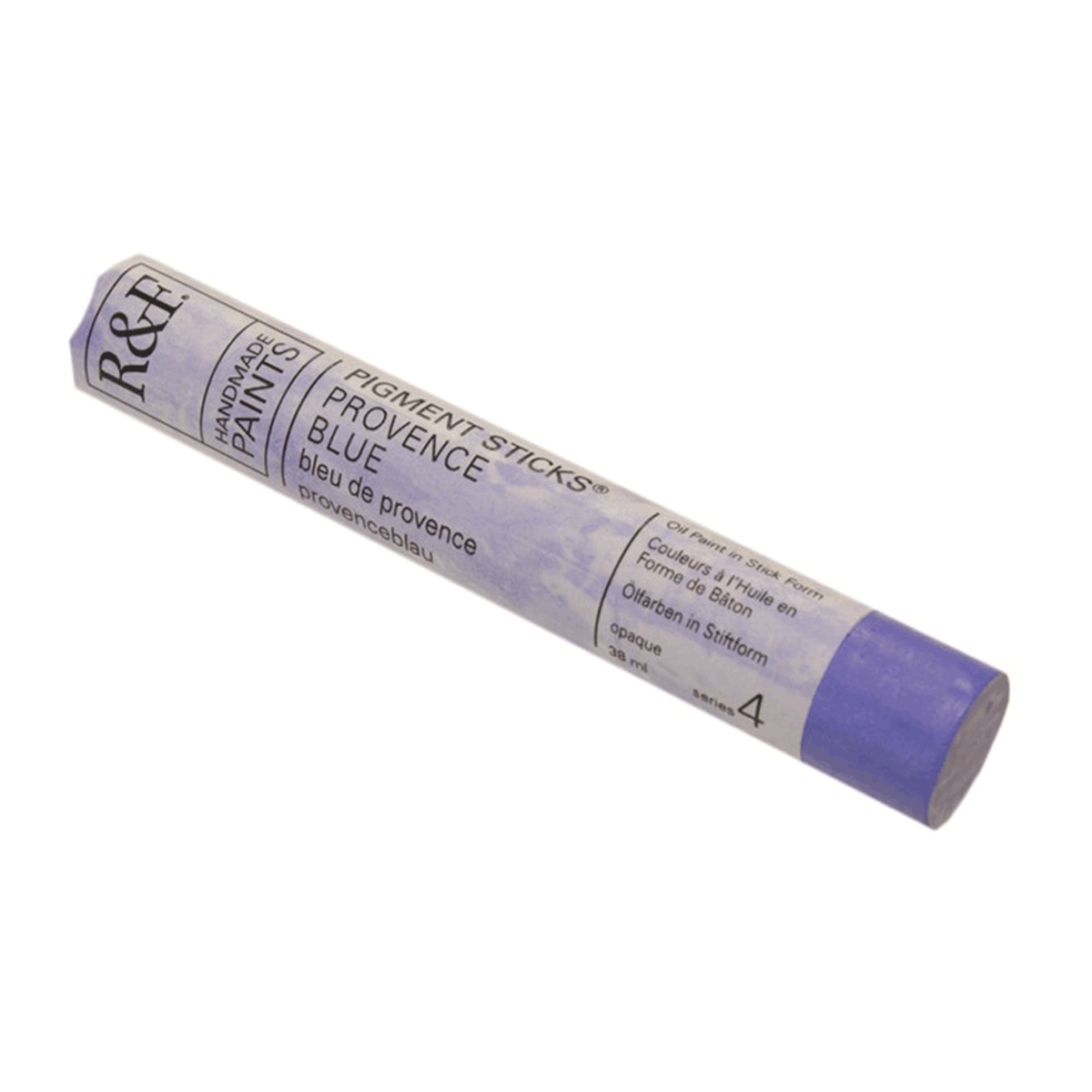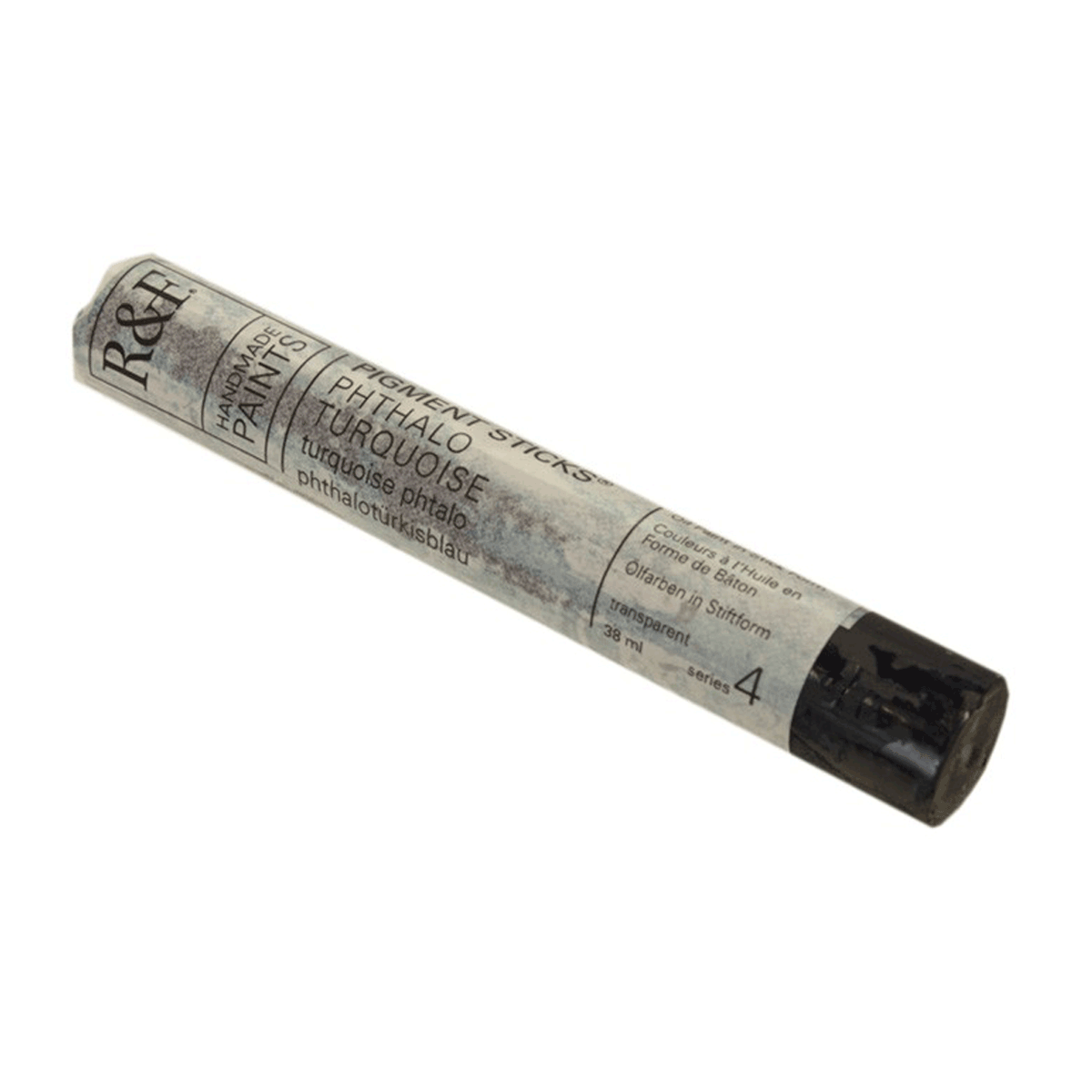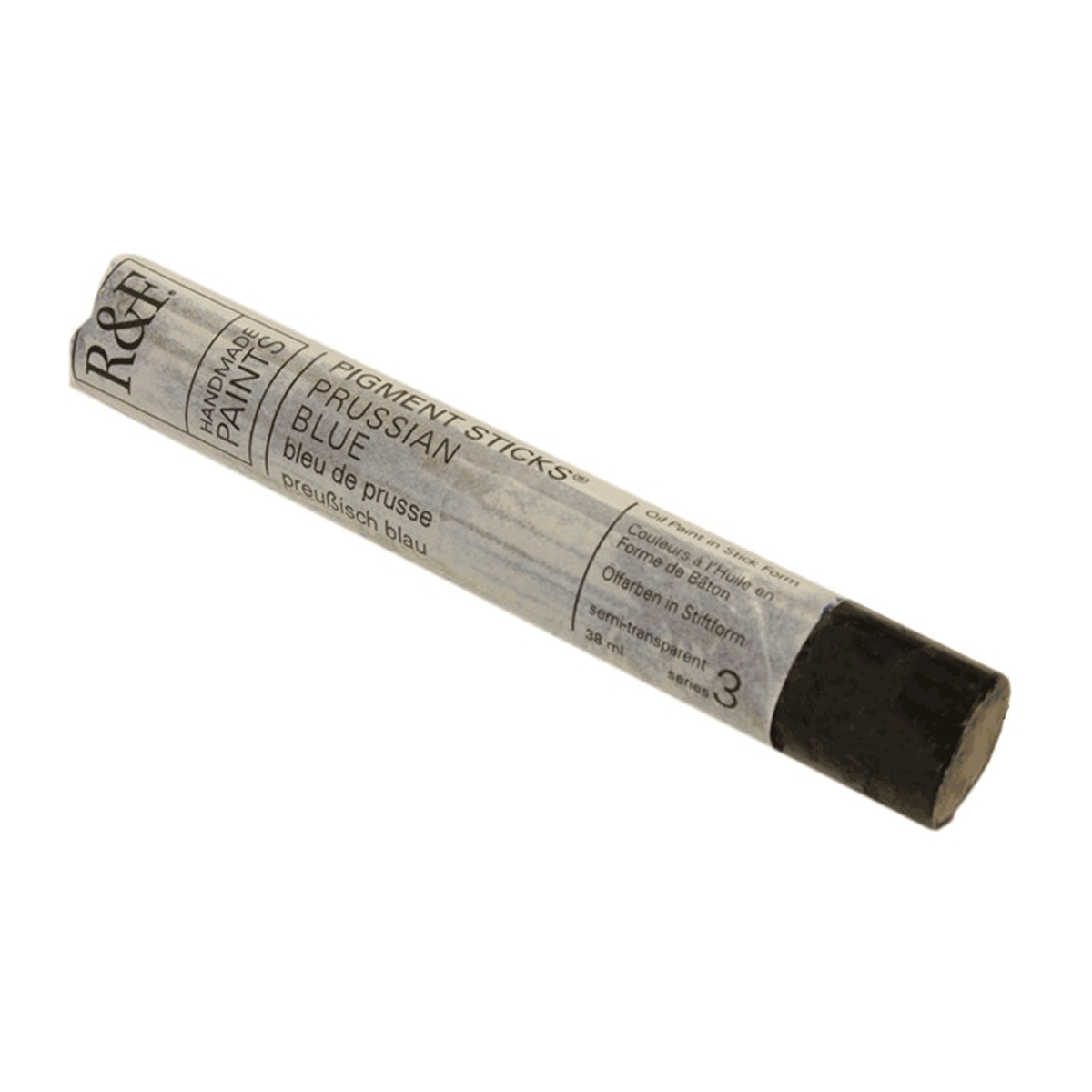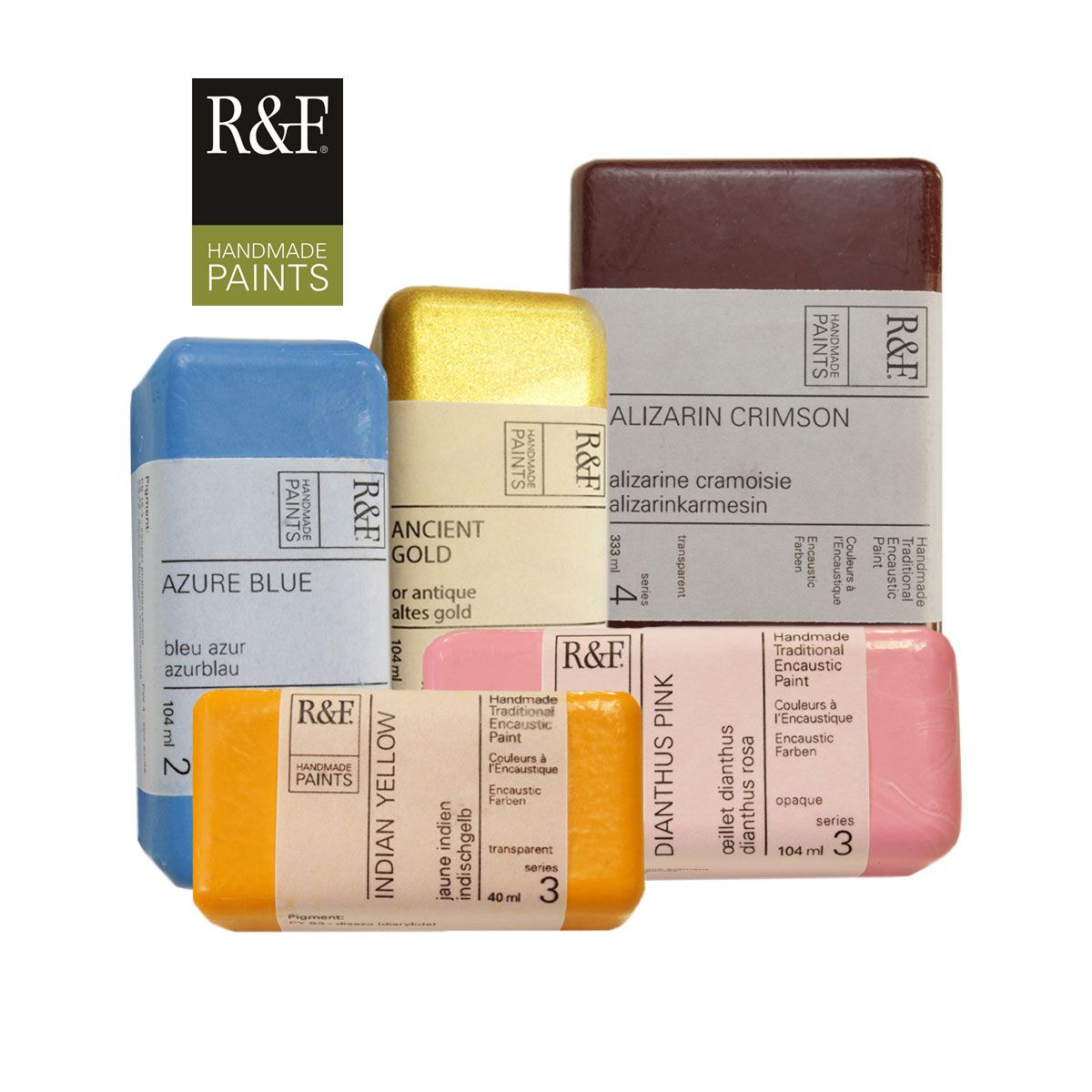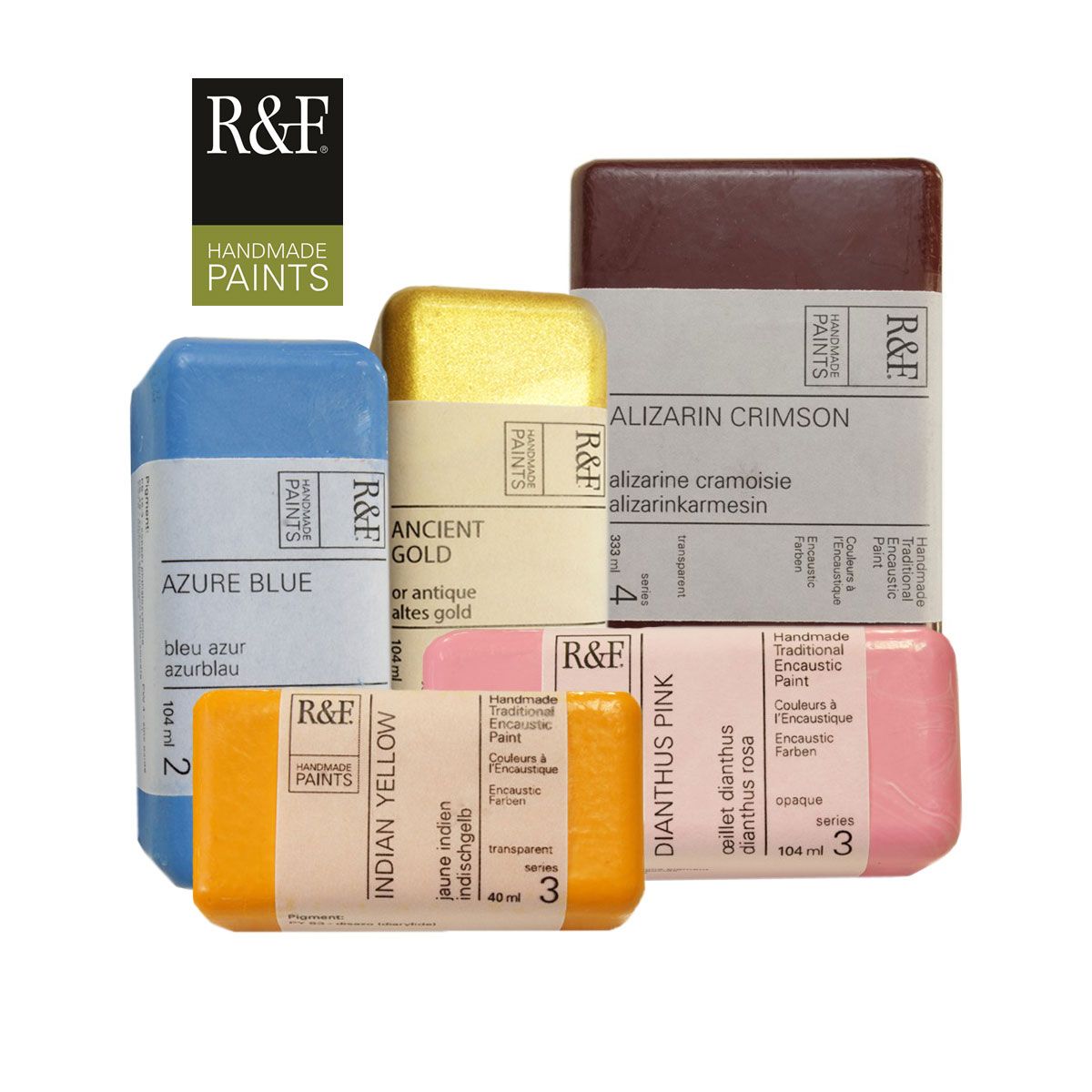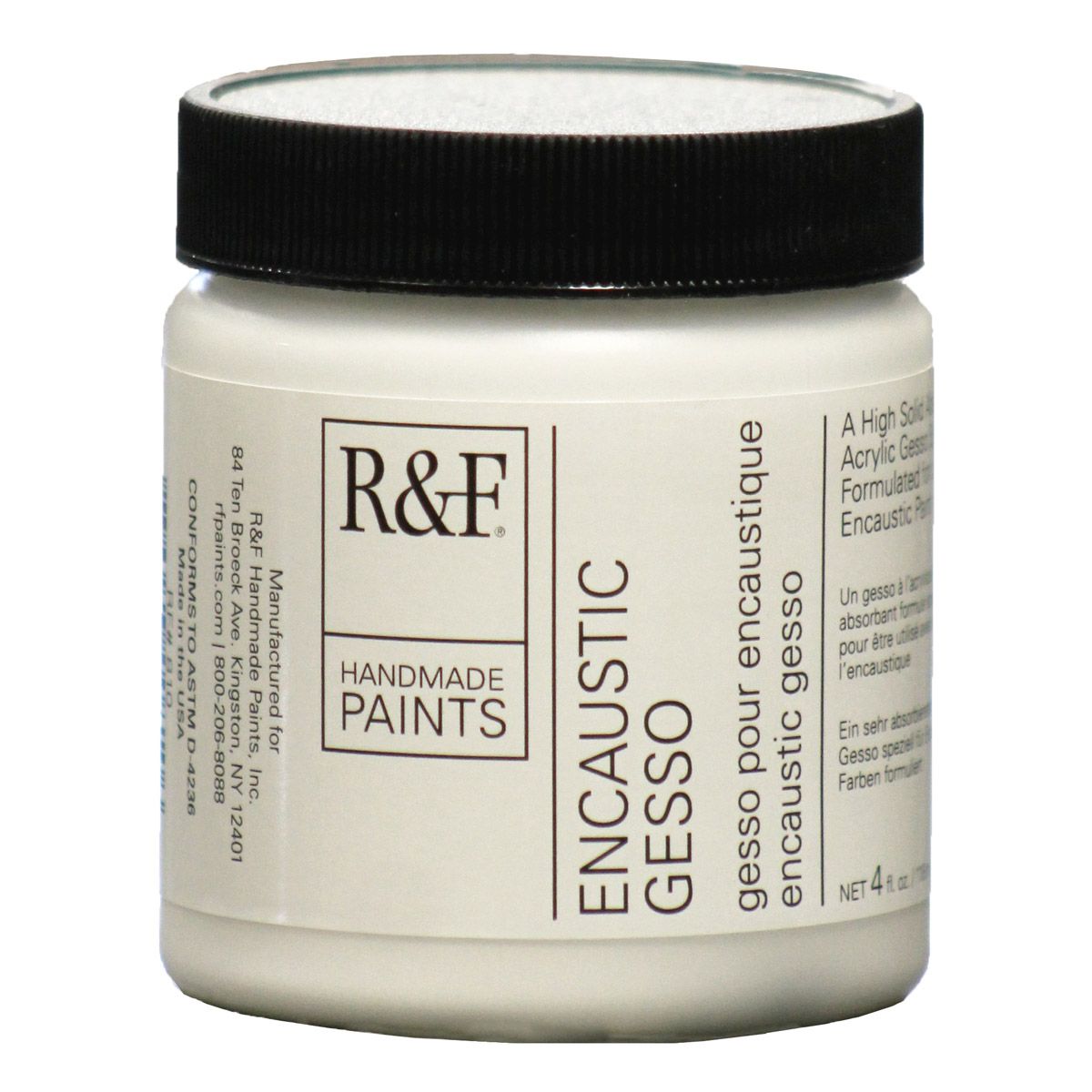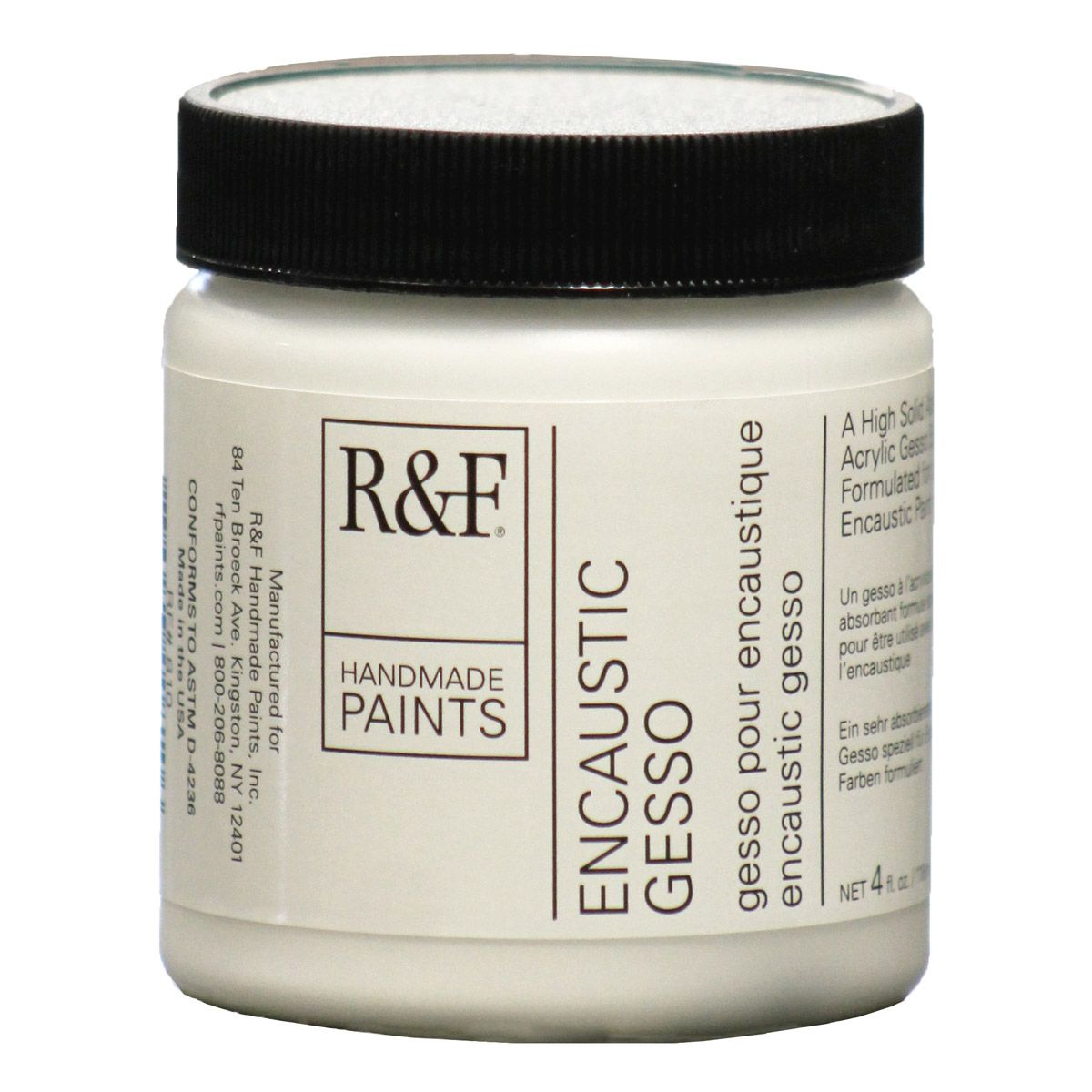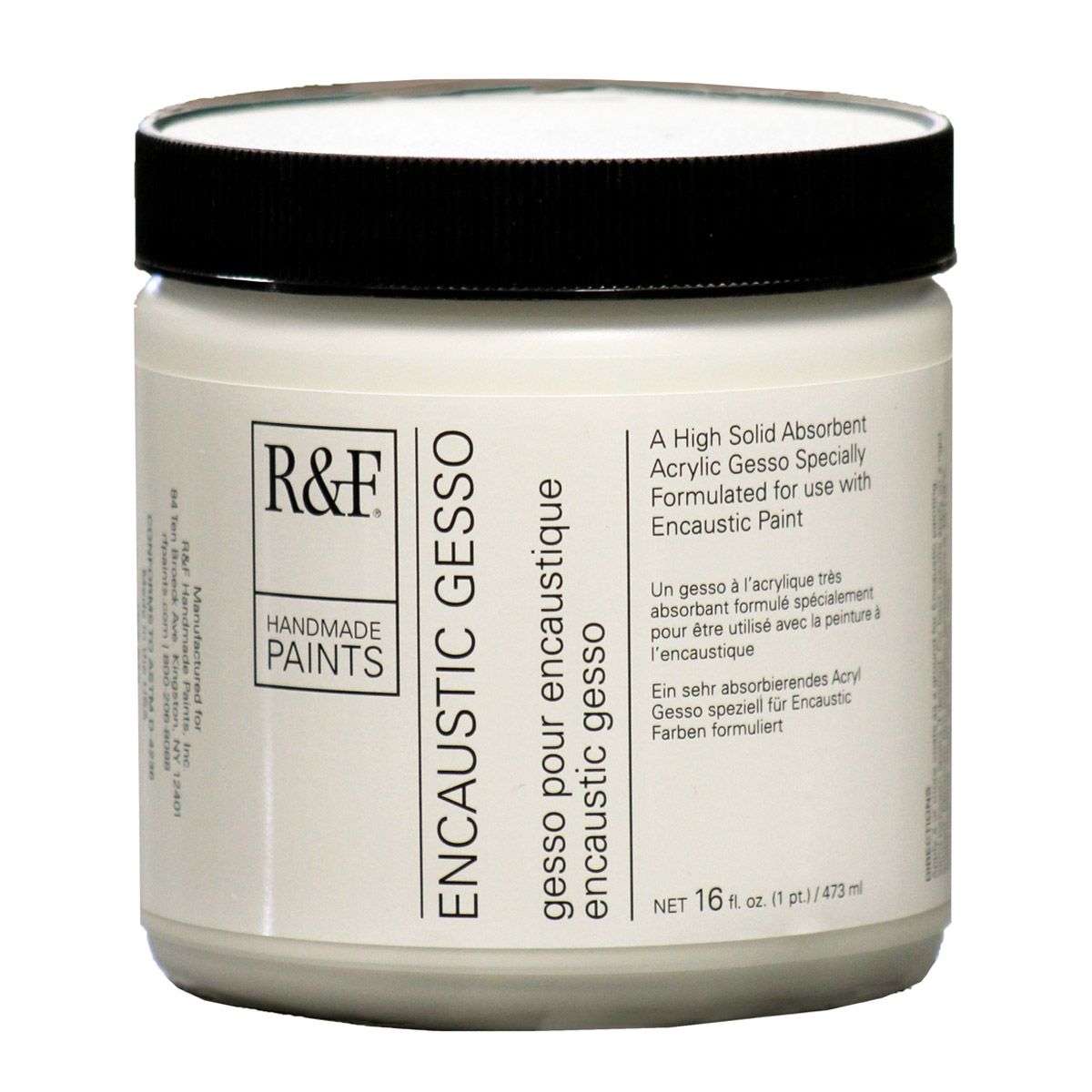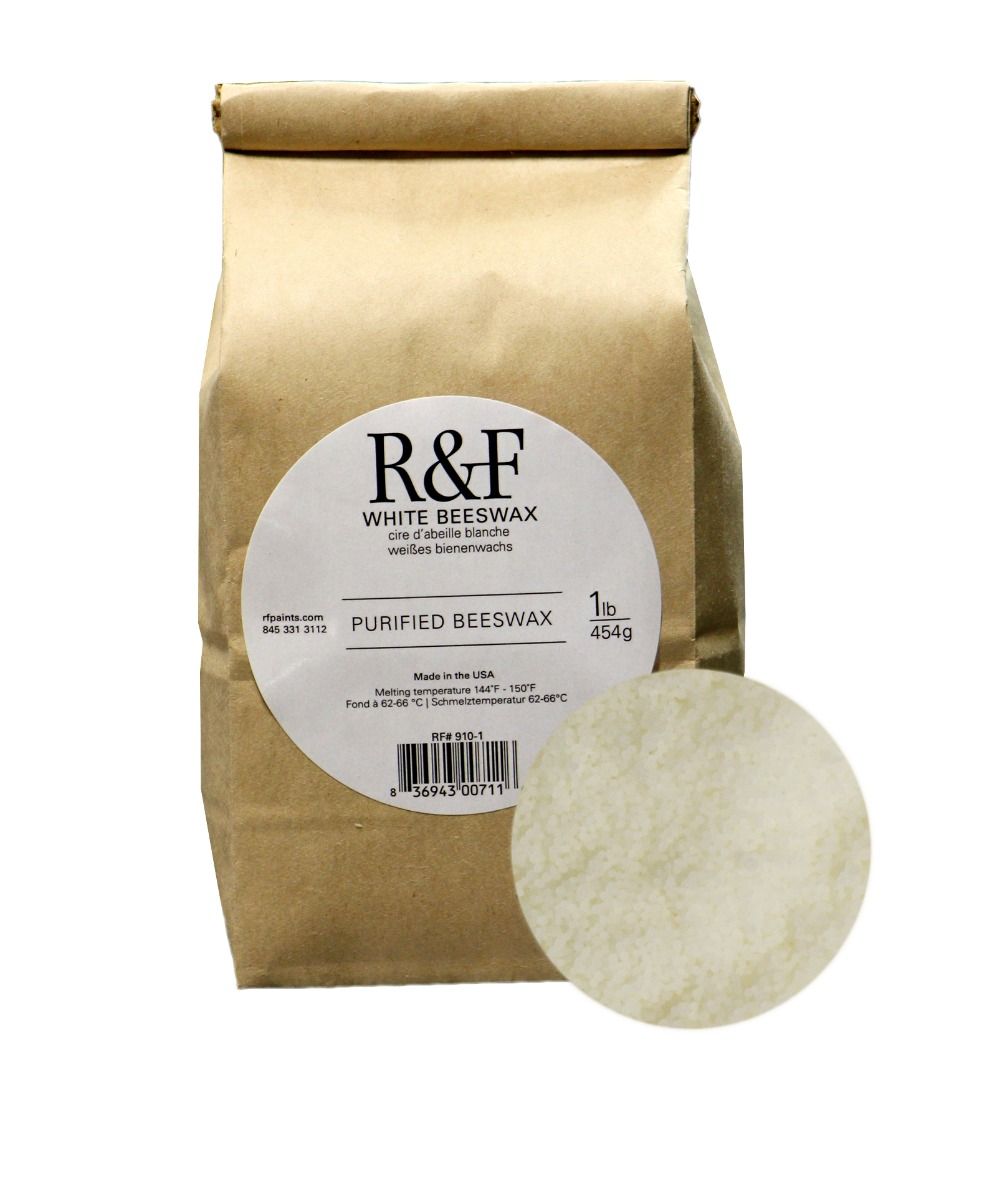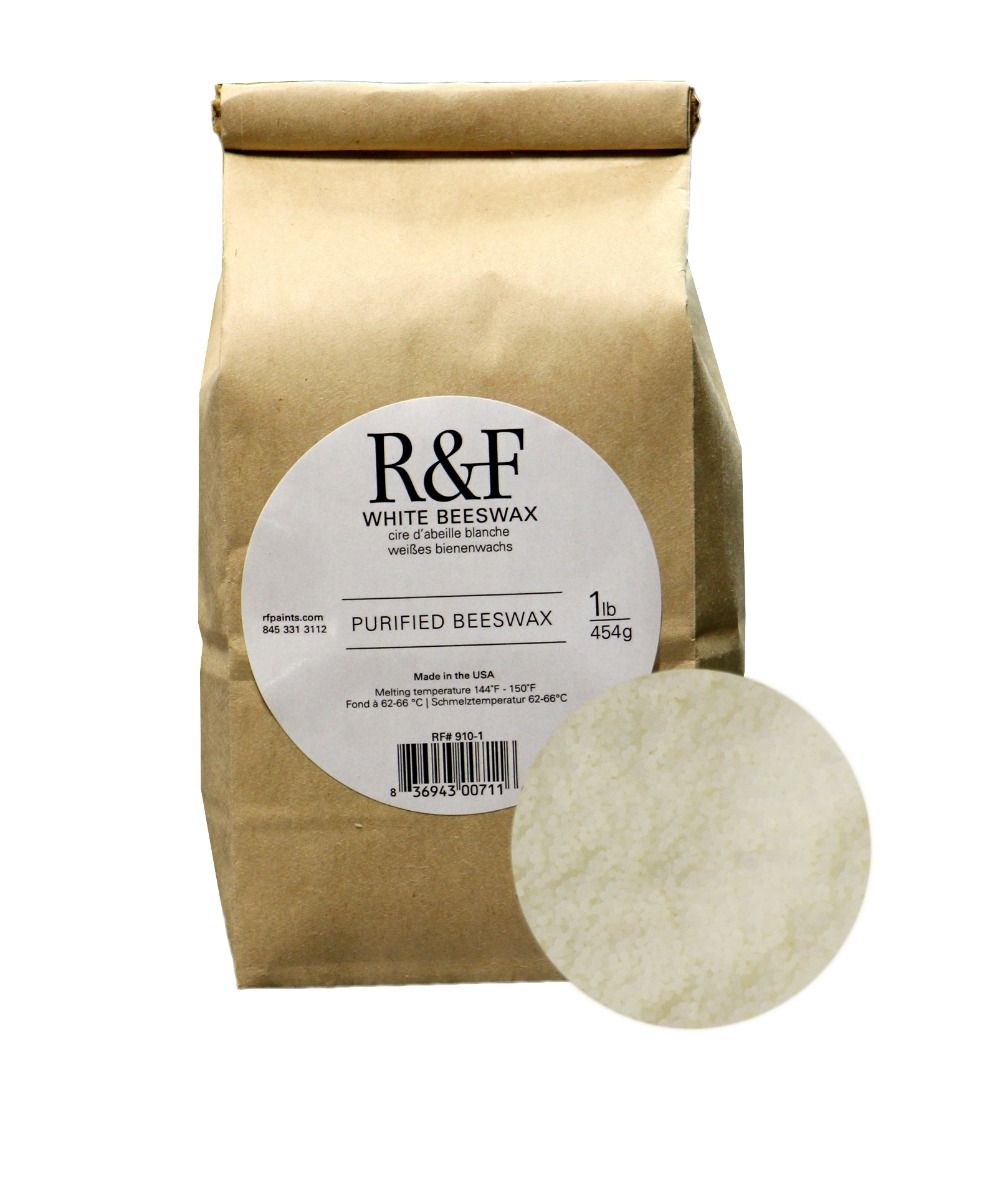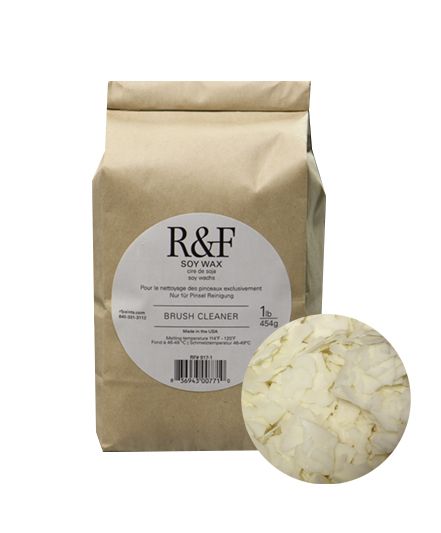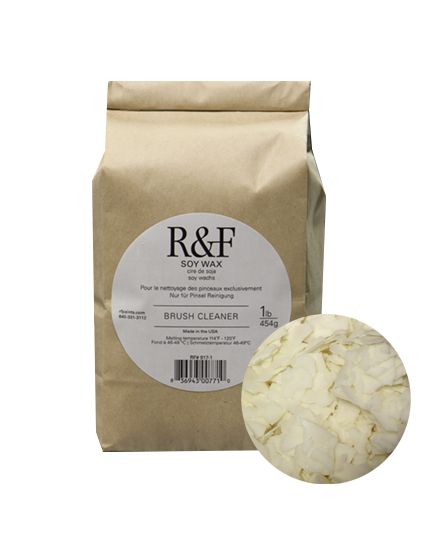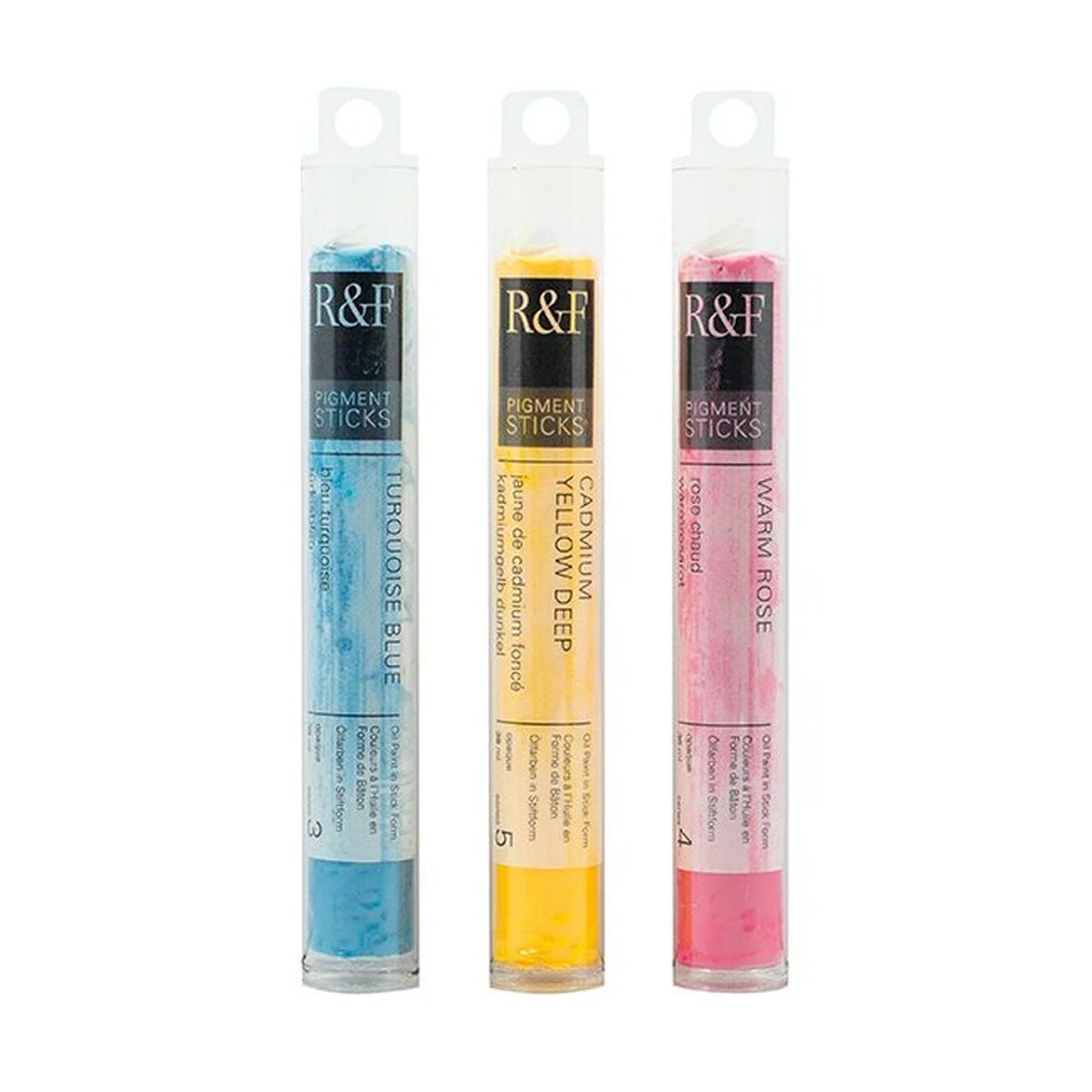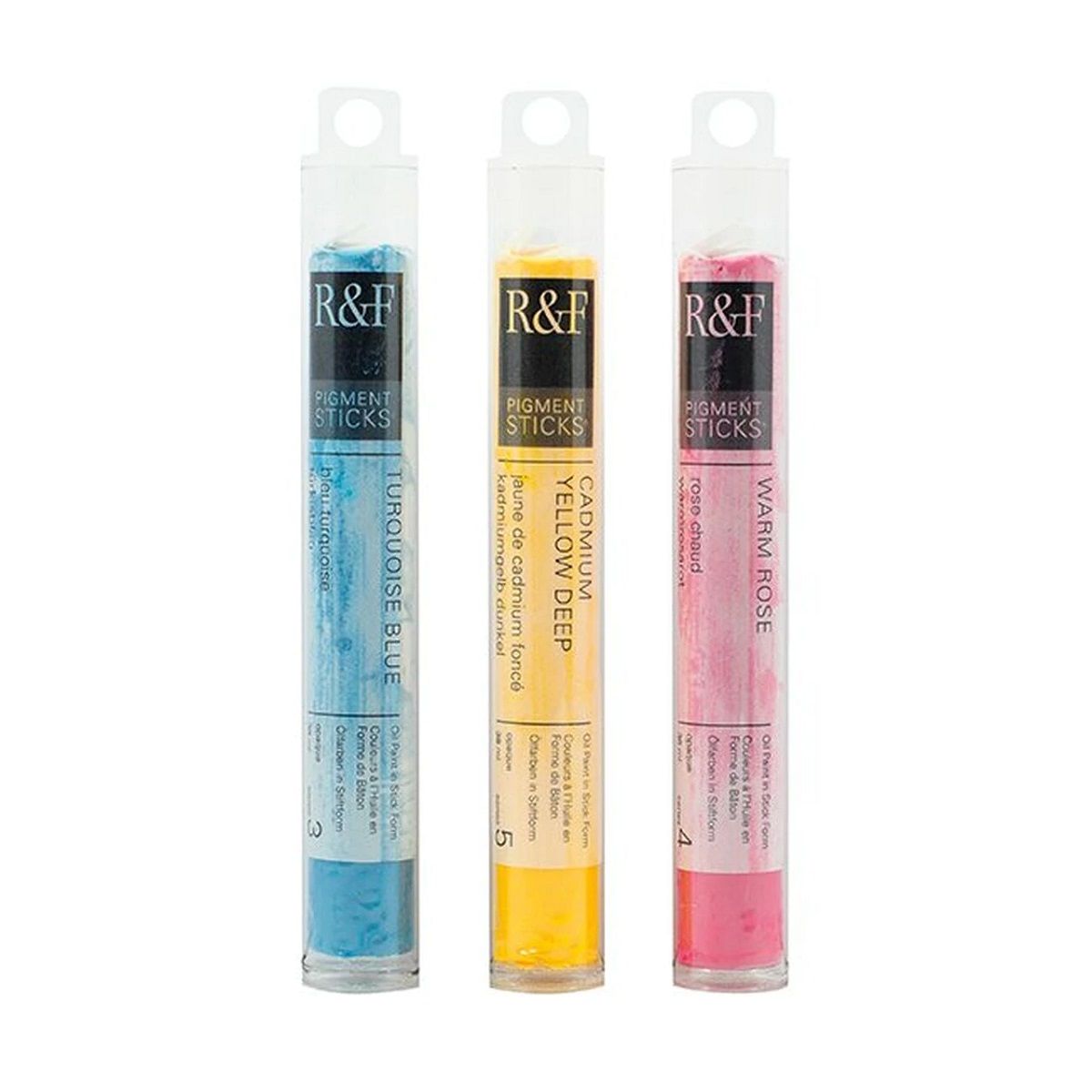R&F Oil Pigment Stick, Provence Blue 38ml
R&F Pigment Stick - Provence Blue, 40 ml
Colour is similar to blues, often used by Matisse. It is a neutral blue next to warm hues but becomes violet when set against cool ones.
- Pigment Composition: PW6-Titanium White; PW4-Zinc White; PB29-Ultramarine [Blue]; PV23-Dioxazine Violet
- Paint Lines: Encaustic, Pigment Stick
- Opacity: Opaque
- Pigment Stick Drying Rate: Slow
- Classification: Mixed
- Chemical Composition: Ultramarine Blue + Egyptian Violet + Titanium-zinc White
- Safety Information: Conforms to ASTM D-4236
R&F Pigment Stick - Provence Blue, 40 ml
Colour is similar to blues, often used by Matisse. It is a neutral blue next to warm hues but becomes violet when set against cool ones.
- Pigment Composition: PW6-Titanium White; PW4-Zinc White; PB29-Ultramarine [Blue]; PV23-Dioxazine Violet
- Paint Lines: Encaustic, Pigment Stick
- Opacity: Opaque
- Pigment Stick Drying Rate: Slow
- Classification: Mixed
- Chemical Composition: Ultramarine Blue + Egyptian Violet + Titanium-zinc White
- Safety Information: Conforms to ASTM D-4236
Pigment Name: PW6-Titanium White
Classification: Inorganic
Chemical Composition: Titanium dioxide
Properties
Titanium White is the most brilliant of the white pigments. It is considered an all-purpose oil colour useful in all techniques and the best all-around white. Its masstone is neither warm nor cool, placing it somewhere between Lead White and Zinc White. It is less prone to cracking and yellowing than Lead White, but it still yellows easily. Titanium White dries slowly in oil form, more slowly than Lead White but more quickly than Zinc White. It is opaque in oil and acrylic forms and semi-opaque in watercolour form. This pigment has good chemical stability, and its tinting strength is superior to both Lead White and Zinc White.
Permanence
Titanium White has excellent permanence and lightfastness.
Toxicity
Titanium dioxide is highly stable and is regarded as completely non-toxic. Animal studies do not indicate that it is absorbed biologically, even after long periods of exposure. The primary safety concern is with the inhalation of fine pigment dust particles.
History
Titanium is the ninth most abundant element in the Earth's crust. However, mineral deposits that are economical to mine are less common. Titanium dioxide was first discovered in 1821, although it could not be mass-produced until 1919. Widespread use of the pigment began in the 1940s. Since that time, it has become the most commonly used white pigment. The name comes from the Latin word Titan, the name for the elder brother of Kronos and the ancestor of the Titans, and the Greek word tito, meaning day or sun.
Pigment Name: PW4-Zinc White
Classification: Inorganic
Chemical Composition: Zinc (II)-oxide
Properties
Zinc White is the coolest white and has a cold, clean masstone and a slightly bluish tint. It has less hiding power and is more transparent than other whites. It dries slowly and is suitable for painting wet into wet, glazing, and scumbling. Zinc White is neither as opaque nor heavy as Lead White; its covering power is not as good and takes much longer to dry. However, it does not blacken when exposed to sulphur in the air as Lead White does. It is precious for making tints with other colours. Unmixed Zinc White dries to a brittle and dry paint film that may crack over the years, so it is unsuitable for frescoing. It is more transparent in acrylic than Titanium White and is the most commonly used white with gouache. Chinese White is a version of Zinc White appropriate for opaque watercolour techniques.
Permanence
Zinc White has excellent permanence and lightfastness.
Toxicity
Zinc White is moderately toxic if ingested and slightly toxic if inhaled.
History
Though historians are divided on who first isolated the element zinc, they agree it was first suggested as a white pigment in 1782. Zinc White was accepted as a watercolour in 1834 and was called Chinese White due to the popularity of oriental porcelain in Europe at the time. Ten years later, a suitable oil form was produced. By the early 20th century, it had improved to the point where it was an acceptable alternative to Flake White.
Pigment Name: PB29-Ultramarine [Blue]
Classification: Inorganic
Chemical Composition: Complex silicate of sodium and aluminum with sulphur
Properties
Ultramarine is the standard warm blue, a brilliant blue pigment with the most purple and least green in its undertone. It has moderate to high tinting strength and beautiful transparency. Synthetic Ultramarine is not as vivid a blue as natural Ultramarine. Ultramarine dries slowly in oil and produces clean, though granular, washes in watercolour. French Ultramarine mixes well with Alizarin colours in oil and watercolour form to create a range of purples and violets. It can dull when mixed with white in acrylic form but mixes well with other colours. The shade varies based on the manufacturer. Considered a great colour for glazes, it is not suitable for frescoing.
Permanence
Ultramarine has excellent permanence, although synthetic Ultramarine is not as permanent as natural Ultramarine. It may discolour if exposed to acid because of its sulfuric content.
Toxicity
Ultramarine has no significant hazards.
History
The name for this pigment comes from the Middle Latin ultra, meaning beyond, and mare, meaning sea because it was imported from Asia to Europe by sea. It is a prominent component of lapis lazuli and was used on Asian temples starting in the 6th century. It was one of the most expensive pigments in 16th century Europe, worth twice its weight in gold, and so was used sparingly and when commissions were larger. Ultramarine is currently imitated by a process invented in France in 1826 by Jean Baptiste Guimet, making blue affordable to artists and extending the range of colours on their palettes.
Pigment Name: PV23-Dioxazine Violet
Classification: Organic
Chemical Composition: Carbazole dioxazine
Properties
Dioxazine Violet is transparent and has very high tinting strength. It is a staining pigment, very dark, and valued when used at full power. Concentrated, it paints out nearly black, but it mixes with Titanium White to form bright, opaque tints of purple. PV23 produces slightly redder shades than PV37. Because the hue can vary with the conditions of preparation and grinding, it may be offered in a red shade, blue shade, and so forth.
Permanence
Dioxazine Violet has a good lightfastness. There may be some concern about fading or shifting colour in tints and washes. Some artists have reported that PV37, a molecular variant, is more lightfast than PV23.
Toxicity: N/A
History
Two molecular variants of Dioxazine Violet, PV23 and PV37, are available. They have similar properties but mix slightly differently.
| Size | 38 ml |
|---|---|
| Brand | R&F Encaustic Handmade Paints |
| Country of Manufacture | United States |
| Type of Store Credit value | Select |
| Country of Origin | 836943005969 |










